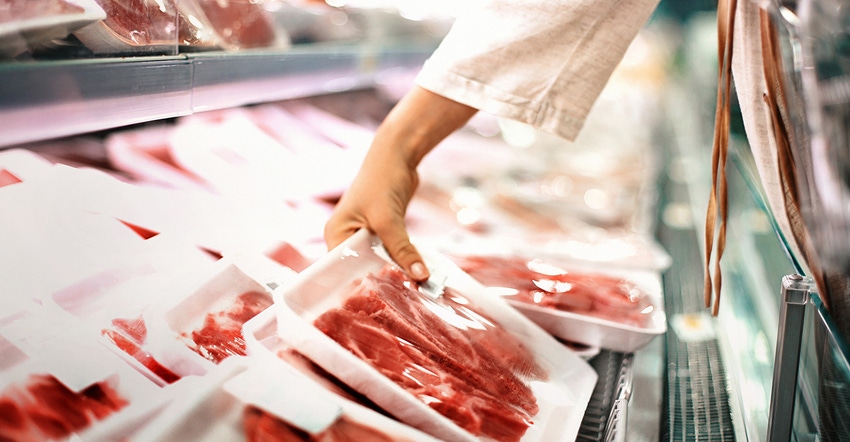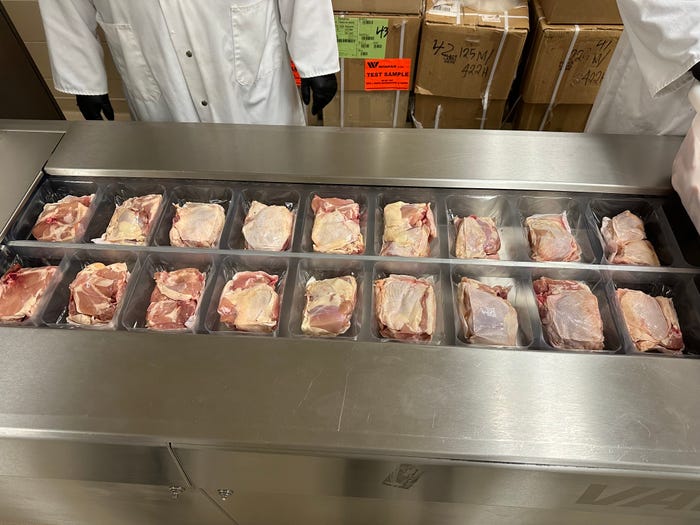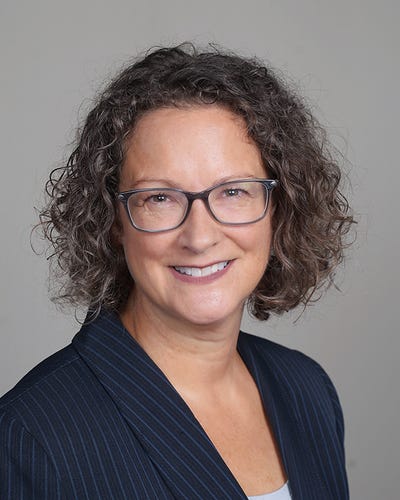Beefed-Up Meat Packaging Advances in Two Ways
Research projects related to shelf-life preservation provide sustainable meat packaging breakthroughs that are beneficial for brand owners and consumers.
July 13, 2023

A global meat packaging study released in January 2023 by Future Market Insights predicts the market will grow 5.2% yearly from 2023 to exceed $12.3 billion by the end of 2033.
According to the report brief, “major drivers include the growing consumption of protein-rich products, rising demand for packaged food products, and an increase on improving the shelf life of meat.”
It’s that last driver we want to examine through the lens of food packaging science research via two major pathways.
Research reveals correlations and real-time tracking for meat packaging.
A tight End-to-End (E2E) cold chain is critical for maintaining food safety and meat quality. Maintaining the exact temperature required for the requisite meat shelf life is becoming increasingly accurate as energy costs rise and new refrigerants phase in to lessen the environmental impact of the cold chain. Temperature, on the other hand, is an indirect quality parameter because the actual microbial or oxidative reaction is not measured, and it lags because previous temperature records are used to infer current meat safety and quality.
The combination of correlations and real-time reporting now allows for continuous determination of product shelf life in the E2E cold chain.
Correlations between temperature and shelf life are derived from modeling the kinetics of meat color and microbial growth;
Correlations between the air around a pallet and the air within a tractor-trailer during transit to the actual product temperature are made;
Real-time time temperature recorders such as Sysco’s digital real-time ‘dashboard’ reporting.
This allows for packaging to be optimized based E2E cold chain and for decision making in the supply chain to reduce meat waste.

Applied research for vacuum meat packaging is also advancing.
Vacuum packaging isolates red meat in an anaerobic environment, prolongs its shelf life, and diminishes the availability of heme iron in myoglobin to bind with oxygen, resulting in a darker surface color.
Since August 2020, packaging research at the Auburn University Lambert-Powell Meats Laboratory lab has used a vacuum thermoform horizontal-form-fill-seal machine donated by packaging equipment supplier Winpak. Recent research using the machine revealed that the color of meat packaged in poor barrier films was more acceptable than that of superior barrier films (Wagoner et al., 2002). New research from this alliance connects the dots between customer preferences for meat color and the oxygen transfer rates required for vacuum-packaged meat. Intriguingly, according to another study, water loss during freeze-thaw cycles causes changes in fat and protein concentrations as well as changes in surface chemical concentrations, which modify the surface coloring that consumers see.
Recent research on sustainable packaging for ground beef shows consumers connect sustainability with resealable packaging, packaging that allows for no-mess portioning of meat, and intelligent packaging that communicates the number of days left to safely consume the ground beef. Follow-up research through the Beef Checkoff funded by the Beef Board explores the sustainability connection between packaging options that prevent consumer meat waste is underway.
Claire Sand has 30+ years of experience in industry and academia. She’s owner of Packaging Technology and Research and Gazelle Mobile Packaging and an Adjunct Professor, CalPoly, Michigan State University, and the University of Minnesota. You can reach her at reach her at www.packagingtechnologyandresearch.com or [email protected].
About the Author(s)
You May Also Like




